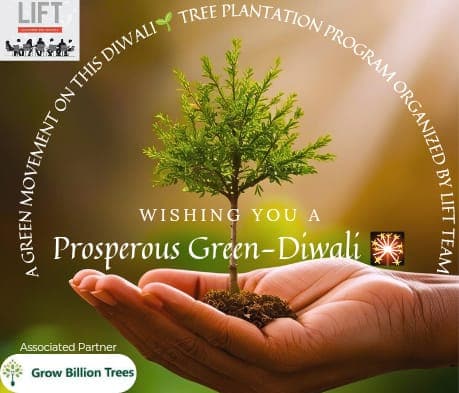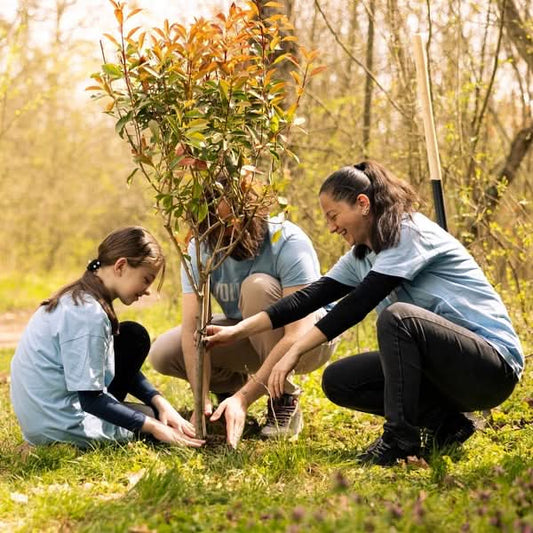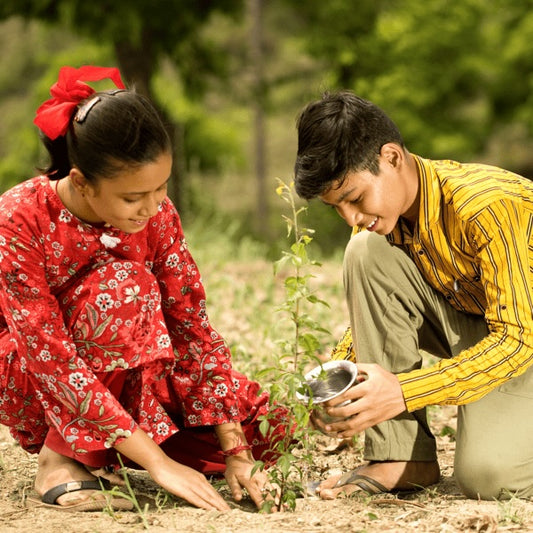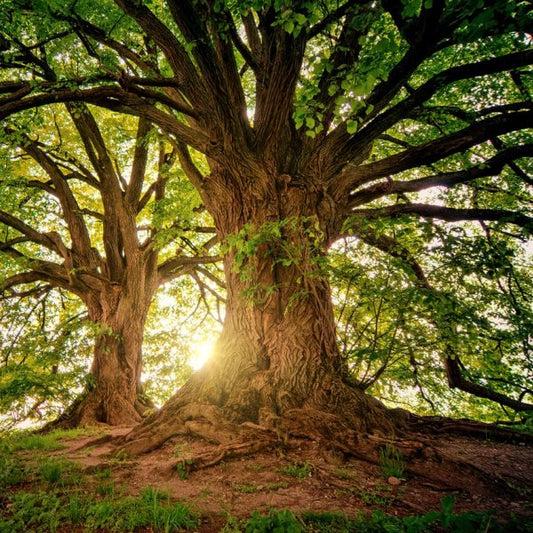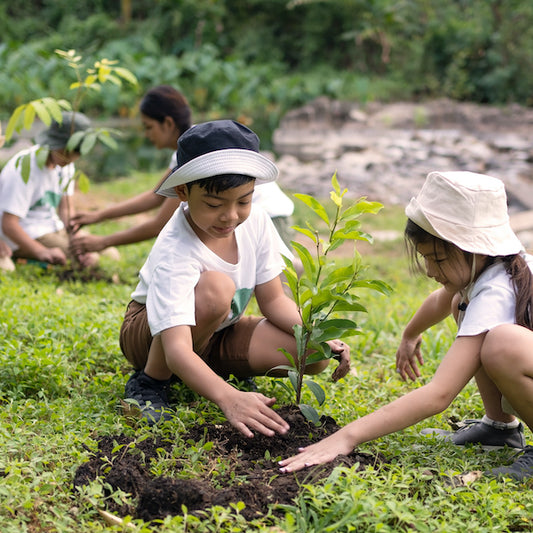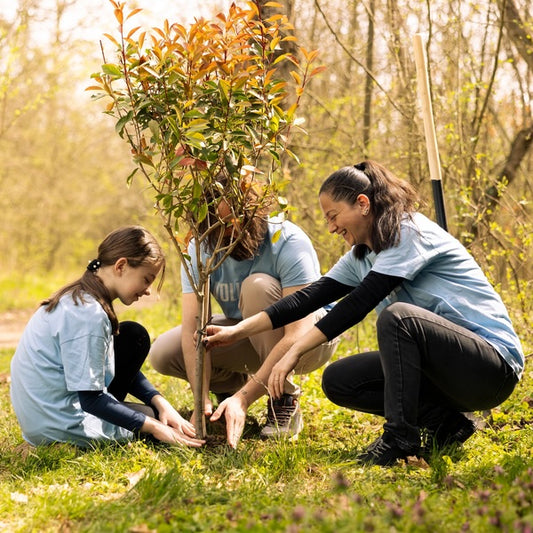A Tree for Every Frame: Grow Billion Trees Salutes S. S. Rajamouli
Rajamouli, born Koduri Srisaila Sri Rajamouli on October 10, 1973, is a visionary filmmaker who redefined Indian cinema with his grand narratives and Read more
Project Update 2
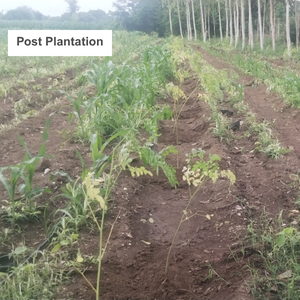
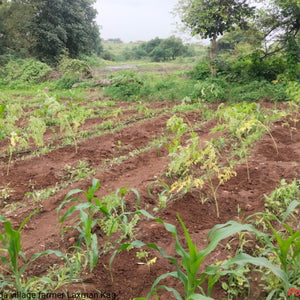
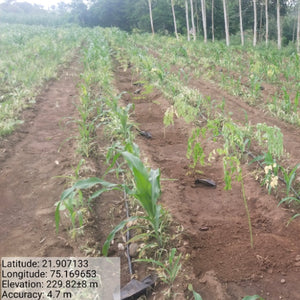
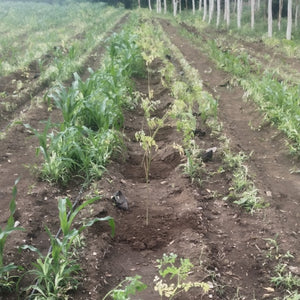
Project Update 1
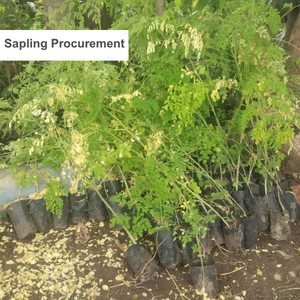
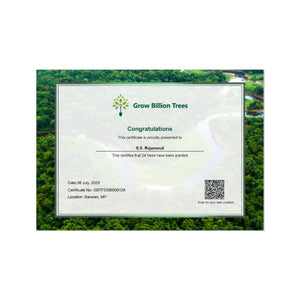
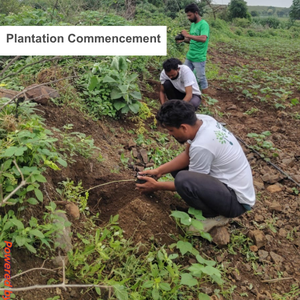
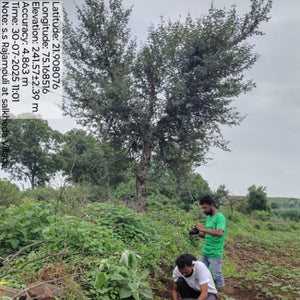
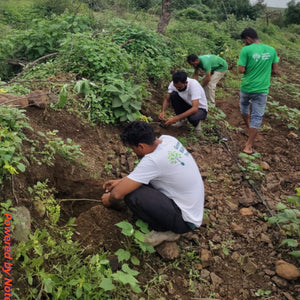
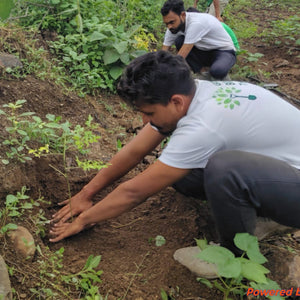
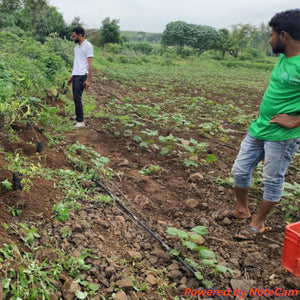
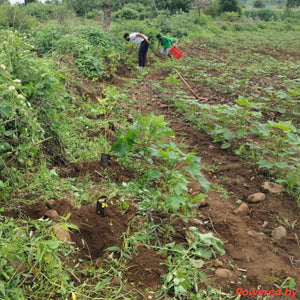
Digital Forest
Forest with 24 Trees planned
Want to plant your tree now?
Plant a Tree @ 299Trees Planted
A Tree for Every Frame: Grow Billion Trees Salutes S. S. Rajamouli
Rajamouli, born Koduri Srisaila Sri Rajamouli on October 10, 1973, is a visionary filmmaker who redefined Indian cinema with his grand narratives and epic storytelling. Widely celebrated for pioneering the pan-Indian film movement, he has taken Telugu cinema to global heights. But while his films enchant millions in theatres, a new tribute to his genius has taken root literally.
To honour his unparalleled contribution to storytelling, Grow Billion Trees planted 24 trees, one for each frame per second, that brings his imagination to life on screen. These trees are not just symbols; they are part of an agroforestry initiative that supports farmers, enhances biodiversity, and restores ecological balance. Planted on farmland, these fruit-bearing and timber trees help regenerate the soil, increase rural incomes, and build climate resilience.
Just as Rajamouli’s films leave a lasting legacy, these trees will grow into a living forest standing tall for generations, enriching lives and landscapes.
Because cinema is magic, and so is planting hope. Rajamouli has mastered the 24 frames; now, 24 trees will echo his impact frame by frame, root by root.
Project Planning & Execution
No of Trees: 24
Plantation Location: Rajpur, District Barwani, Madhya Pradesh 451447
Plantation Date: 24th July 2025
Name of Species: Drumsticks
Species Selection & Its Benefits:
To honour S. S. Rajamouli, the Drumstick tree (Moringa oleifera) was selected for its high nutritional value, fast growth, and strong ecological benefits. Rich in vitamins and minerals, its leaves and pods support farmer incomes through local markets while enhancing food security.
Environmentally, Drumstick trees improve soil fertility, conserve water, and prevent erosion with their deep roots. Their canopy offers shade, supports biodiversity, and helps maintain microclimatic balance, making them ideal for agroforestry systems.
By choosing a tree that nourishes both people and the planet, this initiative reflects Rajamouli’s legacy, impactful, enduring, and rooted in meaningful storytelling.
Planting Methodology and Its Advantages
Agroforestry: To celebrate the impactful legacy of S. S. Rajamouli, a tree plantation was carried out in his honour through the agroforestry model, a sustainable land-use practice that integrates trees with crops. Fruit-bearing and timber species were planted, enriching the soil, increasing biodiversity, and creating long-term income sources for farmers. This green tribute not only honoured his visionary storytelling but also supported climate resilience and rural livelihoods. By linking celebration with sustainability, the initiative became a living symbol of growth, harmony, and a future rooted in ecological balance.
Advantages of Agroforestry
-
Increased Farmer Incomes: This approach helps increase farmers' income by as much as 3 times. Farmers benefit from diversified income sources, lifting economic resilience.
-
Sustainable Livelihoods: Farmers benefit from diversified income sources through the sale of fruits and other tree-based products, reducing dependence on a single crop.
-
Enhanced Biodiversity: Agroforestry creates a diverse ecosystem by integrating trees with crops, attracting pollinators, birds, and beneficial insects that support natural pest control.
-
Environmental Sustainability: This model reduces carbon emissions and promotes sustainable land management, aligning with SDG 13 (Climate Action) and SDG 15 (Life on Land).
-
Food Security & Nutritional Benefits: Fruit-bearing trees provide a direct source of food, improving local nutrition while supporting long-term agricultural productivity.
-
Carbon Sequestration & Climate Resilience: Trees absorb carbon dioxide, helping mitigate climate change while providing shade and windbreaks that reduce temperature extremes and improve microclimatic conditions.
-
Soil Health and Water Conservation: Tree roots prevent soil erosion, enhance water retention, and improve soil fertility by fixing nitrogen and adding organic matter. Agroforestry systems also support groundwater recharge, reduce runoff, and improve soil moisture retention, making them ideal for drought-prone regions.
Conclusion Elements
Impact
Direct Impact
| Parameters | Values | References |
| No. of Trees Planted | 24 | |
| Carbon Sequestration Potential (KG) | 20 |
Small to medium-sized trees can sequester around 10–48 kilograms (22–106 pounds) of CO₂ annually. https://growbilliontrees.com/blogs/knowledge/how-much-co2-can-one-tree-absorb |
| Carbon Sequestration by 24 mature trees ( Tons/year) | 1 Tons | No. of Trees x Carbon Sequestration by 1 mature trees per year |
| Carbon Credit Equivalent | 1 | One carbon credit is equivalent to one tonne of carbon dioxide or the equivalent amount of another greenhouse gas. |
| Carbon Footprint of an avg Indian Citizen (Tons/Year) | 1.8 | https://www.iea.org/countries/india/emissions |
| Offsets Annual Carbon Footprint of (Adults) | 1 | Carbon offset by 24 mature trees per year / Carbon Footprint of an avg Indian Citizen per year |
*This impact analysis is forward-looking (An agroforestry project matures in 3-5 years)
Indirect Impact
Community Impact
-
Empowerment of Farmers - By providing training and resources for sustainable farming practices, agroforestry equips farmers with skills to enhance productivity and adapt to environmental changes.
-
Food Security – By integrating fruit-bearing trees into agricultural systems, the initiative ensures a stable food supply, providing nutritious produce for both consumption and market sale.
-
Environmental Awareness – The project educates the local community on the importance of tree planting, biodiversity conservation, and sustainable land use.
-
Enhanced Social Equity – Agroforestry initiatives foster enhanced social equity by empowering marginalized farmers with sustainable livelihoods, bridging economic gaps, and promoting inclusive community participation in environmental conservation efforts.
-
Resilience to Climate Change – Agroforestry improves soil health, enhances water retention, and reduces land degradation, making farming communities more adaptable to changing climate conditions.
-
Health and Well-being – Increased green cover improves air quality, reduces heat stress, and provides access to nutrient-rich fruits, contributing to the overall health of local communities.
Environmental Impact
-
Carbon Sequestration: Trees act as carbon sinks, absorbing significant amounts of CO2 from the atmosphere, helping to mitigate climate change and reduce greenhouse gas emissions.
-
Soil Health Improvement: Agroforestry enriches soil through organic matter from fallen leaves and roots, improving fertility, structure, and nutrient availability for crops.
-
Erosion Prevention: Tree roots stabilize the soil, reducing erosion caused by wind and water while protecting nearby agricultural fields and water bodies.
-
Biodiversity Conservation: By creating habitats for various species, agroforestry enhances biodiversity, supporting pollinators, beneficial insects, and native wildlife.
-
Water Cycle Regulation: Trees improve water retention, recharge groundwater levels, and reduce surface runoff, contributing to a more balanced and sustainable water cycle.
-
Microclimate Regulation: Agroforestry moderates temperature extremes, reduces wind speeds, and increases humidity, creating favorable conditions for crop growth and ecosystem balance.
Achievements
SDG Goals Achieved through Agroforestry
-
SDG 1: No Poverty – By integrating agroforestry with traditional farming, this initiative provides farmers with additional income sources through fruit yields, improving economic resilience, and reducing poverty in rural areas.
-
SDG 2: Zero Hunger – The plantation of fruit-bearing trees enhances food security by offering nutritional produce while improving soil health for sustainable agricultural productivity.
-
SDG 3: Good Health and Well-Being – Tree plantations improve air quality, soil fertility, and water conservation, creating a healthier environment for local communities. The presence of green spaces also promotes mental well-being.
-
SDG 4: Quality Education – This agroforestry initiative includes farmer training on sustainable land-use practices. These educational efforts equip farmers with knowledge on conservation, resource management, and climate-resilient agriculture.
-
SDG 6: Clean Water and Sanitation – By reducing soil erosion, improving groundwater recharge, and minimising surface runoff, the plantation promotes sustainable water management in the region.
-
SDG 8: Decent Work and Economic Growth – The initiative generates employment opportunities for rural communities, provides training in sustainable agroforestry, and supports long-term economic growth through enhanced land productivity.
-
SDG 9: Industry, Innovation, and Infrastructure – This project integrates innovative agroforestry techniques, including multi-layer cropping systems and soil conservation methods, fostering sustainable land use and industry-community collaboration.
-
SDG 10: Reduced Inequalities – By involving small-scale and marginalised farmers, the project promotes economic inclusivity and reduces inequalities by ensuring equitable access to agroforestry benefits.
-
SDG 12: Responsible Consumption and Production – Agroforestry reduces dependency on chemical inputs, promotes organic farming, and ensures the responsible use of natural resources, supporting sustainable agricultural practices.
-
SDG 13: Climate Action – The planted trees act as carbon sinks, sequestering atmospheric carbon dioxide, enhancing ecosystem resilience, and mitigating the effects of climate change in the region.
-
SDG 15: Life on Land – This initiative promotes biodiversity conservation, prevents deforestation, and restores degraded land, fostering healthy ecosystems and sustainable forestry practices.
-
SDG 17: Partnerships for the Goals – The collaboration between Grow Billion Trees and local farmers demonstrates the power of partnerships in achieving sustainability goals and fostering large-scale ecological restoration.
ESG Achieved through Agroforestry
-
Environmental Impact: This agroforestry initiative plays a crucial role in environmental sustainability by enhancing carbon sequestration, restoring biodiversity, and improving soil and water conservation. The plantation of native and fruit-bearing trees supports climate change mitigation by reducing greenhouse gas emissions and increasing ecosystem resilience. Additionally, the project helps prevent soil erosion, improves groundwater retention, and contributes to a healthier, greener landscape. By integrating sustainable agroforestry practices, this initiative ensures long-term ecological benefits, fostering a self-sustaining environment that supports both nature and local communities.
-
Social Impact: The initiative brings significant social benefits by fostering sustainable livelihoods, improving food security, and enhancing community well-being. By integrating fruit-bearing trees, the project helps farmers diversify their income sources, ensuring greater economic stability and resilience for rural households. Agroforestry practices optimise land use efficiency, leading to higher agricultural productivity while maintaining ecological balance. The plantation also contributes to better air quality, creates green spaces for community well-being, and encourages local participation through awareness programmes. By engaging and educating stakeholders, the initiative empowers communities with the knowledge and skills to adopt sustainable land management practices, fostering long-term environmental and social sustainability.
- Governance Impact: In honour of S. S. Rajamouli, the tree plantation initiative reflects a commitment to ethical and responsible environmental action rooted in strong governance values. By choosing the agroforestry model, the initiative ensures transparency, accountability, and measurable long-term impact. In collaboration with Grow Billion Trees, farmers, and local communities, this tribute promotes sustainable land use and supports farmer livelihoods through strategic partnerships. The initiative embodies Rajamouli’s legacy of visionary impact, extending beyond cinema into real-world sustainability. It highlights the importance of integrating ESG (Environmental, Social, and Governance) principles into every action, setting a benchmark for environmentally conscious celebrations.
Building Communities
This agroforestry initiative goes beyond tree plantation; it strengthens rural communities by empowering farmers, fostering collaborations, and creating sustainable livelihoods. By integrating environmental stewardship with social impact, the project nurtures a sense of shared responsibility, driving long-term benefits for both people and the planet.
-
Empowering Farmers: This agroforestry initiative strengthens farmers’ economic stability by diversifying income sources and improving agricultural productivity. By integrating tree plantations with existing farmland, farmers benefit from enhanced soil fertility, better crop yields, and long-term financial gains. This initiative promotes self-sufficiency and long-term environmental stewardship, ensuring a sustainable future for both farmers and the ecosystem.
-
Fostering Partnerships: The tree plantation initiative in honour of S. S. Rajamouli thrives on the power of collaboration, bringing together environmental champions, local communities, and sustainability advocates. Driven by Rajamouli’s inspiring legacy, this partnership between Grow Billion Trees and local farmers laid the groundwork for meaningful and lasting change. By blending collective expertise, grassroots participation, and a shared ecological vision, the initiative moves beyond symbolic gestures to deliver tangible environmental and social impact. Through the agroforestry model, it uplifts farmer livelihoods while nurturing resilient ecosystems. More than just planting trees, it cultivates a strong culture of cooperation and long-term sustainability.
-
Creating a Ripple Effect: The impact of this initiative goes beyond tree planting; it sets in motion a chain reaction of positive environmental and social change. By improving biodiversity, enhancing carbon sequestration, and promoting sustainable farming, the project contributes to a healthier ecosystem. Additionally, as more farmers adopt agroforestry practices, the region experiences long-term economic and environmental benefits, inspiring further community-driven conservation efforts.
This initiative proved that environmental sustainability thrives when rooted in community effort. It’s not just about planting trees; it’s about planting hope, collaboration, and a shared vision for a greener tomorrow.
Commitment by Grow Billion Trees
-
Ensuring Tree Survivability: GBT prioritizes native species, continuous monitoring, and soil health improvement using organic fertilizers. These efforts ensure sustainable growth and benefit the farmers and communities.
-
Transparency & Accountability: GBT provides detailed reports on tree growth, survival rates, and carbon benefits, using geo-fencing and regular updates to maintain transparency and effectiveness.
-
Sustainable Plantation Efforts: GBT implements projects that balance environmental, social, and economic goals, addressing urban heat islands and degraded farmlands. These efforts promote ecological balance, livelihoods, and long-term climate resilience.
-
Enhancing Ecosystem Health: By selecting native species and creating diverse habitats, GBT enhances biodiversity and ecosystem resilience, ensuring long-term ecological health and supporting wildlife.
-
Long-Term Impact: GBT’s initiatives tackle environmental challenges, enhance rural livelihoods, foster climate resilience, and promote sustainable development while reducing carbon footprints.
Acknowledgment
We extend our heartfelt gratitude for the successful completion of the plantation initiative at Rajpur, Barwani, Madhya Pradesh. This achievement represents a significant step towards environmental restoration, sustainable land use, and community empowerment. It would not have been possible without the collective efforts of dedicated individuals, local farmers, and partner organisations. Their unwavering commitment has played a crucial role in fostering a greener, more resilient ecosystem for future generations.
To the Farmers of Barwani: Your dedication to embracing agroforestry and incorporating fruit-bearing trees into your farming practices is truly commendable. This initiative not only enriches soil health but also strengthens long-term agricultural sustainability. Your commitment to fostering a healthier ecosystem while securing a better future for future generations is inspiring. We are grateful to be part of this journey and look forward to witnessing the lasting positive impact of your efforts.
To Our Ground Partners and Volunteers: Your dedication, expertise, and passion for environmental conservation have been essential in making this initiative a success. Through our collective efforts, we have shown that collaboration and a shared vision for sustainability can create a lasting impact. Your invaluable contributions have played a crucial role in driving this mission forward, and we deeply appreciate your commitment. Thank you for being an integral part of this journey toward a greener future.
Through this collective effort, we have taken significant steps toward revitalizing ecosystems, promoting sustainable agriculture, and enhancing the livelihoods of farmers in Satara. This is just the beginning, and we look forward to strengthening our partnership in pursuit of a greener, more sustainable future for all.
Thank you for your unwavering commitment and support.
Closing Remarks
The successful completion of the agroforestry plantation in honour of S. S. Rajamouli at Rajpur, Barwani, Madhya Pradesh, marks a unique and symbolic milestone in the journey toward environmental sustainability and rural empowerment. This initiative has not only enriched the region’s green cover but also strengthened the livelihoods of local farmers through the integration of sustainable, income-generating agricultural practices.
By improving soil health, encouraging biodiversity, conserving water, and supporting long-term economic resilience through fruit and timber yields, this project reflects the transformative potential of agroforestry. With 24 trees, each representing a cinematic frame per second, now thriving, this living tribute will continue to inspire ecological restoration and climate action.
As we celebrate this meaningful achievement, we extend our heartfelt appreciation to the farmers of Barwani, our partners, and all those who contributed to bringing this vision to life. Your dedication and collaboration have helped turn a cinematic tribute into a thriving green legacy. Together, we reaffirm our commitment to building a more sustainable future and hope this initiative inspires more individuals to plant trees with purpose and imagination.
Trees for Corporates
Trending
Most Popular
Agroforestry Benefits for Individuals
Why just grow trees when you can grow trees and profits? Agroforestry isn’t just a fancy word—it’s a lifestyle upgrade. When individuals participate in agroforest models, they’re not just planting saplings; they’re investing in climate-smart agriculture that pays nature and people back in dividends. These trees work overtime—sequestering carbon, enhancing biodiversity, and boosting soil fertility. And while the trees grow, so do opportunities for better food production, sustainable income, and resilience against climate shocks. If Mother Nature had a LinkedIn profile, agroforestry would be listed under “Endorsed Skills.” So, the next time you consider planting a tree, think of it not just as a green gesture, but as your personal contribution to a forest that feeds, shades, and sustains. It’s like a SIP (Systematic Investment Plan), but greener, leafier, and way cooler to brag about on Instagram.
Tree Plantation for Farmer Livelihood
Want your birthday gift to someone to literally grow? Plant a tree for a farmer’s livelihood. This isn’t some passive "thoughts and prayers" gesture—it’s real action. When you sponsor a tree in an agroforest, you’re helping a farmer diversify their income and reduce dependency on unpredictable crops. Think of it as a green job generator. These trees produce fruits, timber, medicinal products—even shade that boosts crop yields. So, while you sit back and enjoy your air-conditioned karma, some farmer is breathing easier, harvesting smarter, and smiling wider. It’s impact with roots. Literally.
Sustainable Gifting Through Agroforestry
Socks are great. Chocolates are fine. But a tree? Now that’s a gift that keeps giving. Welcome to the world of sustainable gifting through agroforestry—where your presents don’t just get unwrapped, they get planted. Imagine gifting a tree that grows mangoes, supports biodiversity, and powers a rural household’s economy. That’s not just thoughtful; it’s thoughtful, photosynthetic, and future-proof. Agroforestry gifts are the new love language for people who care—about the planet, the people, and their Instagram grid aesthetics. So skip the glitter wrap. Go green and gift roots with purpose.
Individual Role in Climate Action
You may not be Greta, but planting one tree makes you part of the climate crew. Your carbon footprint’s worst nightmare? Agroforestry. As an individual, stepping into the green arena with even a single tree makes a massive difference. These aren’t ornamental plants; they’re ecological warriors. They sequester carbon, cool the air, protect the soil, and throw in fruits for bonus points. Think of it as climate action in your name, without the protest signs. So next time you feel eco-anxiety kicking in, don’t binge-watch documentaries—plant a tree and claim your place in Earth’s Hall of Green Fame.
Agroforest Trees as Legacy Projects
Want to be remembered without a marble statue? Plant a tree. Even better—plant it in an agroforest. These leafy legends outlive us, grow with grace, and feed generations. Imagine your grandchildren picnicking under the shade of a tree you planted or a farmer harvesting from it and thanking the "kind stranger who planted this years ago." Legacy projects aren't about plaques—they're about impact. And agroforest trees? They give back in fruit, timber, carbon capture, and stories that echo long after you’re gone. It’s not just your legacy. It’s a leafy, lively legend in the making.
Community Impact of Individual Tree Plantations
One person. One tree. Big difference. When you plant a tree in an agroforest, you're not just going green—you're going community. That one tree may provide fruit for a household, shade for a child’s homework, or fodder for a family’s goat. Multiply that by hundreds, and you’ve got a community transformed. This is the ripple effect of individual action. It’s like eco dominoes—your small act triggers economic growth, climate resilience, and better living standards. Who knew your Sunday morning tree-planting hobby could become a community’s success story?
Tree Plantation and Soil Health
you get bragging rights every time someone bites into a juicy fruit that your tree helped nourish from the ground up. Take that, synthetic fertilizers.
Agroforest Tree Adoption by Individuals
Adopting a tree in an agroforest is the ultimate low-maintenance relationship. It doesn’t ghost you. It doesn’t demand attention. It grows, gives, and silently saves the world. You get updates. You get photos. And best of all, you get the satisfaction of knowing you helped a farmer, enriched biodiversity, and added shade to someone’s life—literally. Plus, it's far more unique than adopting a star (they don’t do much for soil health, let’s be honest). Agroforest tree adoption is eco-pride in action. Go ahead. Be a tree parent. It looks good on you.
FAQ
What is the benefit of tree plantation for individuals in an agroforest model?
Tree plantation by individuals in an agroforest model provides multiple benefits—environmental, social, and economic. At Individual, we encourage tree planting that restores soil health, improves air quality, and generates sustainable income for farmers. It allows individuals to contribute to climate action while supporting rural livelihoods. Agroforestry trees grow with crops, creating a resilient ecosystem. By planting a single tree, you support biodiversity, reduce your carbon footprint, and promote regenerative agriculture that benefits communities and the planet.
How does tree plantation help support farmer livelihood?
At Individual, we believe every tree planted in an agroforest supports a farmer’s journey toward financial and ecological stability. These trees provide fruits, fodder, and timber, becoming alternate sources of income. They improve crop yields through natural shade and soil fertility. When individuals plant trees through our platform, they directly help reduce farmer dependency on mono-cropping and bring diversity to their land use—making them more resilient to climate change and market fluctuations.
Can I plant a tree as a gift for someone?
Absolutely! Gifting a tree through Individual is a unique and sustainable way to celebrate any occasion. Whether it’s a birthday, anniversary, or memorial, your tree becomes a living tribute planted in an agroforest, supporting farmer livelihoods. The recipient receives a personalized certificate and updates, making the gift memorable and impactful. It’s a green alternative to material gifts and reflects your commitment to people and the planet.
What kind of trees are planted in the agroforest?
At Individual, we focus on planting native, multi-purpose trees that thrive in agroforestry conditions. These include fruit-bearing, nitrogen-fixing, and shade-providing species like Mango, Guava, Amla, Neem, and Karanj. These trees benefit both the environment and the farmer. Each species is carefully selected based on the local climate, soil conditions, and farmer needs to ensure long-term sustainability and productivity.
How does tree adoption work for individuals?
Tree adoption with Individual is simple and impactful. You choose the number of trees you want to adopt, and we plant them in an agroforest in partnership with local farmers. Each tree gets a unique ID, and you receive digital updates about its location, species, and impact. Your adopted trees support carbon sequestration, biodiversity, and farmer income. It’s a long-term commitment to climate and community, made easy through technology and transparency.
How can I track the impact of the tree I planted?
When you plant or adopt a tree with Individual, we provide regular digital updates, including planting certificates, geolocation, species details, and photos. We also share stories about how your trees are helping farmers and improving ecosystems. This transparency ensures you stay connected to the impact your tree is making—from improving soil health to supporting rural economies and enhancing biodiversity in the agroforest.
Is tree plantation in agroforests a form of carbon offset?
Yes, tree plantation through Individual in agroforests contributes to carbon offsetting. Trees naturally absorb carbon dioxide as they grow, making them effective tools in the fight against climate change. Agroforestry enhances this by integrating trees into productive farmland, which increases biomass and long-term carbon storage. While we focus on holistic environmental and social benefits, the carbon offset component is a valuable byproduct of your green contribution.
Can tree plantation be considered a CSR activity for individuals or small businesses?
Definitely. Through Individual, tree plantation can be aligned with personal or small business CSR goals. It’s an affordable, scalable way to give back to the planet and communities. Every tree planted supports local farmers and contributes to global sustainability targets. We provide reports, impact data, and certification—making it easy for individuals and entrepreneurs to showcase their commitment to social and environmental responsibility.
How is agroforestry better than traditional tree planting?
Agroforestry, as promoted by Individual, integrates trees with crops, creating a sustainable land-use system. Unlike traditional planting, which often isolates trees, agroforests provide food, income, and environmental services. They enrich soil, conserve water, support pollinators, and build climate resilience. Farmers benefit economically while individuals contribute to a holistic ecosystem. It’s not just tree planting—it’s nature, economy, and community growing together.
Why should individuals in India get involved in agroforest tree plantation?
India faces environmental challenges like deforestation, soil degradation, and farmer distress. At Individual, we empower citizens to be part of the solution through agroforest tree plantations. It’s an opportunity to actively contribute to reforestation, rural empowerment, and climate mitigation. Whether you plant one tree or a hundred, you’re part of a movement that nurtures both land and livelihood. It’s your small act with a giant impact.
- Choosing a selection results in a full page refresh.
- Opens in a new window.



